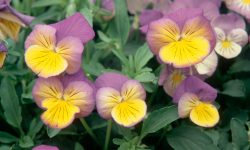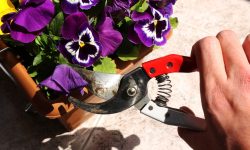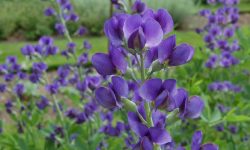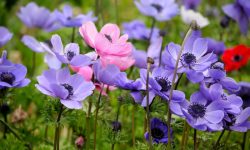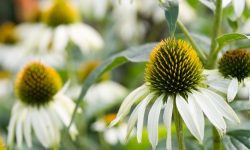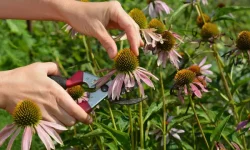Asters are among the most beloved flowers in North American gardens, prized for their star-shaped blooms and ability to bring vibrant color to the late-season landscape. With a name derived from the Greek word for “star,” these hardy perennials truly live up to their celestial title. But a common question among both beginner and seasoned gardeners is: when do asters bloom?
Understanding the blooming habits of asters is essential if you want to enjoy their full beauty and ensure a garden that bursts with color precisely when most other flowers are starting to fade. This guide offers a deep dive into the blooming cycle of asters, how it varies by species and climate, and what you can do to encourage a longer, more vibrant display.
What Are Asters?
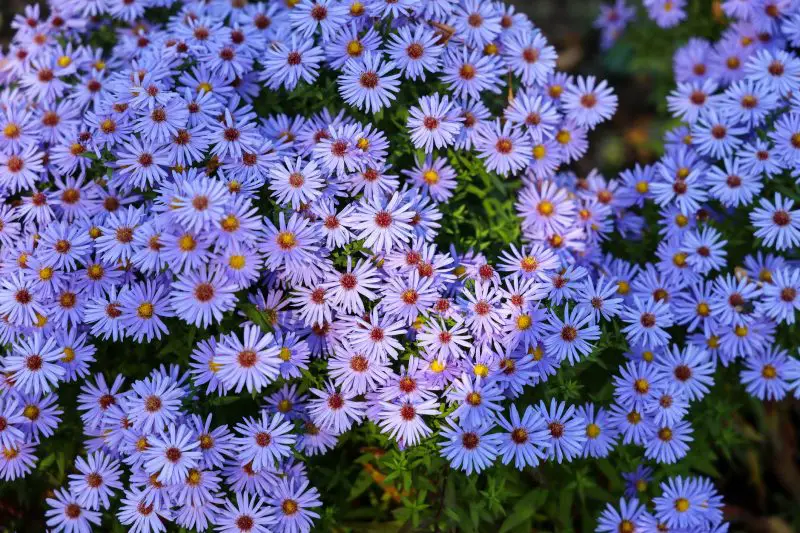
Asters belong to the Asteraceae family, which includes daisies, sunflowers, and chrysanthemums. Native to North America, Europe, and Asia, these perennials have become a staple in temperate gardens around the world.
Their daisy-like appearance, combined with an impressive range of colors—from purples and pinks to blues and whites—makes them particularly attractive to gardeners looking to add late-season color. In addition to their beauty, asters serve as an essential food source for pollinators like bees and butterflies, especially in fall when other nectar sources are scarce.
Asters can vary in size depending on the species and growing conditions. Some compact varieties grow only 12 to 18 inches tall, making them ideal for borders and containers, while others like the New England aster can reach heights of 3 to 6 feet, offering dramatic vertical interest in flower beds.
The foliage of asters is typically lance-shaped and ranges from light to dark green. Some species, such as the aromatic aster, feature foliage with a pleasant scent that adds another dimension to the plant’s appeal. Most asters are hardy perennials, thriving in USDA zones 3 through 9, and they perform best in full sun with well-drained soil.
Asters are often used in cottage gardens, wildlife-friendly landscapes, and mixed perennial borders. Their extended blooming time and low maintenance needs make them a valuable addition to gardens that aim to offer continuous seasonal interest. Whether grown for their ornamental beauty or ecological value, asters have earned their place as a garden favorite.
When Do Asters Typically Bloom?
General Blooming Period
Most asters bloom from August to October, offering rich color when most summer flowers begin to fade. In cooler zones, early varieties such as the Wood aster may start blooming in July. In warmer regions, some types like the Aromatic aster can continue into early November.
New England asters often flower from late August and peak in September, standing out with bold, tall displays of purple or pink blooms. Other species like the Heath aster or Smooth aster follow slightly different schedules but generally align with the late-summer-to-fall pattern.
Their blooming period makes asters one of the last perennials to shine before winter, adding seasonal interest and supporting pollinators at a crucial time. Gardeners often use staggered plantings of multiple varieties to maintain color throughout the late season.
Factors That Influence Blooming Time
Several factors can affect when asters bloom, including temperature, day length, soil quality, and care. Asters are photoperiod-sensitive, which means they respond to changes in daylight. As the days get shorter toward the end of summer, this shift triggers the plant to start forming buds and bloom.
Environmental stress such as drought or poor soil conditions can delay blooming or reduce flower production. However, with proper care, asters are resilient and can perform beautifully even in challenging conditions.
Cool nighttime temperatures often accelerate bud development in asters, especially in late August and September. In contrast, extended periods of high heat may temporarily stall bloom formation, particularly if water is limited. Providing afternoon shade in extremely hot climates can help mitigate this issue.
Soil fertility also matters. Overly rich or nitrogen-heavy soil may encourage excessive foliage growth at the expense of flowering. Well-balanced soil with moderate fertility supports a more consistent blooming schedule. Gardeners who amend their soil with compost in spring and avoid over-fertilizing during summer typically see the best results.
Inconsistent watering or overcrowding can reduce air circulation and increase the risk of disease, both of which can impact flowering. Dividing asters every two to three years not only rejuvenates the plant but also encourages more prolific blooming by preventing root congestion and enhancing airflow around the base.
Popular Aster Varieties and Their Bloom Times
New England Aster (Symphyotrichum novae-angliae)
One of the most well-known and widely planted aster species in the United States, the New England aster begins blooming in late August and continues well into October. Its tall growth habit and vibrant purple to pink flowers make it a showstopper in fall gardens. This variety thrives in full sun and moist, rich soil and can reach heights of up to six feet. Due to its late-season blooms and reliable structure, it pairs beautifully with ornamental grasses and goldenrod for a vibrant fall display.
New York Aster (Symphyotrichum novi-belgii)
Closely related to the New England aster, this variety also blooms in late summer to early fall. It tends to be slightly shorter but equally prolific, producing a dense display of blooms in shades of lavender, blue, pink, and white. New York asters prefer slightly wetter conditions and can be more susceptible to powdery mildew, so good air circulation is important. Their compact size makes them ideal for borders and containers.
Smooth Aster (Symphyotrichum laeve)
Known for its smooth, blue-green foliage, the smooth aster blooms slightly earlier than its New England cousin, often starting in mid to late July. It provides an excellent transition from mid-summer into fall and is highly attractive to pollinators. This upright species is drought-tolerant and thrives in sandy or gravelly soil, making it ideal for xeriscaping and wildflower meadows.
Aromatic Aster (Symphyotrichum oblongifolium)
This low-growing, spreading variety begins blooming in September and continues into November in some regions. Its fragrant foliage adds an extra sensory layer to its garden appeal, and it performs exceptionally well in dry, rocky soils. Aromatic asters remain compact and bushy, usually not exceeding two feet in height, which makes them suitable for edging paths and rock gardens.
Heath Aster (Symphyotrichum ericoides)
Blooming from late August through October, heath asters are known for their small, daisy-like white flowers that cover the plant in a dense mat. They are drought-tolerant and perfect for naturalistic or prairie-style plantings. Their fine-textured foliage resembles that of heath or heather, which gives them their name. They are also commonly used in pollinator gardens and are excellent for attracting bees and butterflies.
Blooming in Different USDA Zones
Zone 3 to 5
In colder climates with shorter summers and early frosts, asters typically bloom from late July through early October. The growing window is limited, so it’s best to choose early-blooming varieties like the smooth aster (Symphyotrichum laeve) or wood aster (Eurybia divaricata), which start flowering in midsummer. These varieties are also more cold-hardy and able to survive harsh winters. For best performance, plant asters in full sun with well-drained soil to help blooms develop quickly before the season ends.
Zone 6 to 7
In these temperate zones, asters begin blooming in late August and can continue into mid or even late October, depending on the variety and local weather conditions. This region offers flexibility in choosing both early and late bloomers, such as New England aster and New York aster, allowing gardeners to stagger plantings and enjoy continuous color for nearly two months. Deadheading spent flowers can prolong blooming, while mulching helps maintain soil moisture and root health through variable fall temperatures.
Zone 8 to 10
In warmer southern zones with mild autumns, asters may begin blooming as early as late July and continue into November or even early December in frost-free areas. The longer growing season supports a wide range of varieties, but heat-tolerant options like aromatic aster (Symphyotrichum oblongifolium) and New York aster tend to thrive best. These varieties appreciate some afternoon shade and consistent watering in hot, dry months. With proper care, they can become long-lasting perennials that provide vibrant, late-season color and support pollinators well into fall.
How to Extend the Aster Blooming Season
Deadheading Spent Blooms
Removing faded or dried blooms not only improves the plant’s appearance but also stimulates the production of new flower buds. By preventing the plant from channeling energy into seed formation, deadheading effectively prolongs the blooming window—sometimes by several weeks. For best results, use clean, sharp shears to snip the stem just above a set of healthy leaves. This practice is especially useful in zones with longer falls, where asters can continue blooming well into October or November with consistent care.
Proper Watering and Soil Care
Asters thrive in soil that is moist yet well-drained, and they are sensitive to both prolonged drought and soggy conditions. Inconsistent watering can cause stress, leading to fewer or smaller blooms. Water deeply when the top inch of soil feels dry, especially during flowering. Applying a 2- to 3-inch layer of organic mulch helps conserve moisture, regulate soil temperature, and suppress weeds. In heavier soils, consider amending with compost or perlite to improve drainage and prevent root rot, which can compromise blooming.
Pruning and Pinching
Pinching involves removing the top inch or two of growing stems in late spring to early summer—typically around June. This encourages the plant to branch out, leading to more stems and flower buds. While pinching does delay the initial bloom by a week or two, the resulting floral display is fuller, more uniform, and longer-lasting. In climates with shorter growing seasons, it’s important to finish pinching by mid-July to give the plant time to form buds before the days begin to shorten. Avoid heavy pruning after this point, as it can reduce overall flowering.
Fertilizing Strategically
Feeding asters at the right time can significantly influence how long and how abundantly they bloom. A slow-release, balanced fertilizer (such as 10-10-10) applied in early spring promotes strong root development and healthy foliage. For long-term results, incorporate organic matter like compost or aged manure into the soil before planting. Avoid applying nitrogen-rich fertilizers during midsummer or later, as this tends to produce lush green growth at the expense of flower production. Light feeding with a low-nitrogen bloom booster in early summer may help support bud development without overstimulating leaf growth.
Aster Blooming and Pollinators
Why Asters Are Crucial for Pollinators
Asters serve as a vital nectar and pollen source during a critical transition period in the garden. As many summer flowers fade and food becomes scarce, asters begin their peak bloom—providing consistent foraging opportunities for native bees, honeybees, hoverflies, and migrating monarch butterflies. For late-season pollinators like bumblebee queens fattening up for hibernation or butterflies fueling their migration, asters may be one of the last abundant food sources available. Some species, like the New England aster and smooth aster, are particularly rich in nectar, making them highly attractive in ecosystems where pollinator survival depends on autumn resources.
Creating a Pollinator-Friendly Garden
Designing a garden with pollinators in mind involves more than simply planting flowers—it requires thoughtful choices that support biodiversity through the seasons. When incorporating asters, select a variety of species such as New York aster, aromatic aster, and heath aster to stagger bloom times and extend the period of nectar availability. Massing plants together not only creates a visual impact but also provides easier access for pollinators that prefer dense floral resources. Pair asters with other late bloomers like goldenrod to further diversify the habitat. Always avoid systemic pesticides and insecticides, especially neonicotinoids, which linger in pollen and nectar and are toxic to bees. Instead, encourage natural pest control by welcoming predatory insects and practicing organic gardening methods.
Troubleshooting Common Blooming Issues
No Blooms on Asters
A lack of blooms can be frustrating, but the cause is often cultural rather than genetic. Asters that are grown in too much shade may develop healthy foliage but fail to set buds. Also, high-nitrogen fertilizers, while promoting lush green leaves, often suppress flowering. Another common mistake is pruning or pinching too late in the season—after mid-July—which can remove developing buds. Soil that’s overly rich or poorly drained can also interfere with blooming, so ensure the planting area is well-drained and moderately fertile. For container-grown asters, root crowding or transplant shock may delay or prevent blooming.
Sparse or Weak Blooms
When blooms appear but are small, few, or short-lived, it’s often a sign that the plant is under stress. Soil that lacks organic matter or key nutrients, especially phosphorus and potassium, may not support abundant flowering. Irregular watering—either too much or too little—can also stress asters and lead to reduced bloom quality. Additionally, overcrowded plants may compete for resources and sunlight, resulting in spindly growth and fewer flowers. Thinning dense clumps every 2–3 years can refresh the plant and boost performance.
Pest and Disease Problems
Common pests like aphids and spider mites sap energy from plants, leaving them weakened and less able to produce flowers. Aphids often cluster around tender stems and buds, while spider mites thrive in hot, dry weather and can cause stippling and leaf drop. Powdery mildew, a common fungal disease in asters, covers foliage in a white film and can reduce photosynthesis and flower output. To minimize issues, space plants well apart, prune away infected foliage, and water at the base rather than overhead. Neem oil, insecticidal soap, or a strong spray of water can help manage most infestations naturally. Selecting resistant cultivars and rotating plantings can also reduce long-term problems.
Seasonal Care Tips for Better Blooming
Spring
Early spring is the ideal time to assess the health of your aster plants as new shoots begin to emerge. Pruning away any winter-damaged stems will encourage clean, vigorous growth. Applying a balanced, slow-release organic fertilizer at this stage supports strong root and stem development, setting the foundation for prolific blooming later. Dividing mature clumps every 2–3 years in spring also prevents overcrowding and helps rejuvenate older plants. When replanting divisions, space them well to promote airflow and reduce disease risk.
Summer
Pinching back asters in early summer—up until early July—helps maintain a bushier shape and encourages more flowering stems. This also delays blooming slightly, so plants are more likely to peak when other flowers are fading. Regular watering becomes crucial during dry spells; inconsistent moisture can lead to stress and fewer blooms. Mulching with straw, shredded leaves, or compost not only retains soil moisture but also keeps roots cool and reduces competition from weeds. Keep an eye out for early signs of pests or disease during this period of rapid growth.
Fall
Fall is the highlight of the aster’s bloom cycle. Continue removing spent flowers to encourage more buds to form until frost halts growth. If you prefer a tidier garden, you can cut back stems to about 2–3 inches after the first hard frost. However, consider leaving some seed heads intact—besides adding winter interest, they serve as a food source for birds like finches and chickadees. It’s also a good time to collect seeds if you want to propagate naturally.
Winter
In regions with freezing winters, wait until the ground has fully frozen before applying a protective mulch layer. Use materials like pine needles, straw, or shredded bark to insulate the root zone and prevent frost heaving. Avoid mulching too early, which can attract pests or trap excess moisture. In milder climates, asters may stay green or only partially die back, and a light trim in late winter may suffice. Winter is also a good season to plan your garden layout for next year, especially if you want to stagger aster bloom times with complementary species.
Companion Planting for Extended Garden Interest
Asters pair well with a wide range of perennials to create lasting color and texture in the garden. Plant them with early bloomers like coneflowers, bee balm, or daylilies to ensure continuous flowering from spring through fall.
For added visual interest, mix asters with ornamental grasses or silver-leaved plants like artemisia. These companions enhance texture contrast and support the asters’ upright growth.
Pollinator-friendly partners such as goldenrod, rudbeckia, and sedum not only extend the bloom season but also attract beneficial insects. Grouping these plants together boosts garden health and creates a vibrant, wildlife-friendly landscape.
FAQ About Asters time blooms and how to extend the flower season
When do asters typically start blooming?
In most regions, asters begin blooming from late July through early November. In cooler climates (USDA Zones 3–5), they tend to bloom earlier, while in warmer zones (8–10), the blooming period can last longer with proper care.
How can I extend the blooming season of asters?
To keep asters blooming longer, regularly deadhead spent flowers, provide consistent watering, and ensure the soil stays moist but well-drained. Pinching back the stems in early summer also encourages bushier growth and more flower buds.
Why is my aster not blooming even though it looks healthy?
Common reasons include too little sunlight (less than 6 hours daily), excessive nitrogen fertilizer, or pruning too late in the season. Make sure the plant gets full sun and avoid cutting it back after midsummer.
Should I grow asters with other flowers for better garden interest?
Yes, asters pair beautifully with plants like coneflowers, rudbeckias, sedums, and ornamental grasses. These combinations provide long-lasting color and attract a wide variety of pollinators, enhancing both beauty and biodiversity.
Do asters attract pollinators, and why is that important?
Asters are vital late-season nectar sources for bees, butterflies, and beneficial insects. Planting them helps sustain pollinator populations in the fall, supporting overall garden health and the success of surrounding plants.
Conclusion: Enjoying the Fall Beauty of Asters
Knowing when asters bloom allows gardeners to strategically plan their landscapes for a burst of color just when it’s most needed. Whether you’re growing them for beauty, pollinators, or both, asters offer an easy-care solution to the late-season lull in garden excitement.
With proper planting, maintenance, and variety selection, you can enjoy their stunning flowers from late summer well into fall. Take time to observe their role in your garden’s ecosystem, and you’ll find that asters bring not only beauty but life and motion to your autumn landscape.

